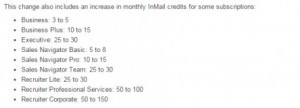by Sean Hargrave, , Staff Writer, June 16, 2016
Millennials are leading a trend to get news stories through social media — and that means that in more than one in two instances, they don’t even notice the brand the news come from. In Korea and Japan, where using social for news is more established, the news brand is only recognised in one in four stories consumed.
As social aggregation of news becomes more common, and Facebook is used in one in two cases of news sharing on social, it is clear that news brands will struggle to stand out. In fact, it’s the one of the points made clear in the latest research from the Reuters Institute for the Study of Journalism. In a world where Millennials are already saying social is more important a news source than television, it is inevitable that headlines will attract — as will advice from a friend to read the story — but the brand name is being pushed way back into the background.
Interestingly, the study confirms that more than half of all respondents of all ages are now receiving news on their mobile device — way above tablet use, which has waned. In just a couple of years, the tablet has declined in value, and so too has the importance place to tv news. Instead we have a mobile-first world where content is being shared through social.
There is some relatively good news for brands in that the majority of the content being consumed through social is still from the large, well-known news groups. However, you only have to look at the huge rise of sites such as YouTube and BuzzFeed to get an idea of how quickly digital organisations can become news disruptors. For news brands there are several hurdles here. They have to rely on people using their home page as a destination. People, particularly younger consumers, simply don’t go to a brand for news nearly as much as older generations did. So news brands are less in control of who comes to them. Instead, it’s up to regular readers to share content and for the news brand to have a large enough organic reach on social media to get noticed.
This, of course, coincides with one in seven now having installed an ad blocker — which puts a very large spanner in the works when it comes to publishers making money — and that proportion looks to be only set to increase. As for subscriptions, well, the UK in particular is at the bottom of an international league table on willingness to pay for news. Just 7% of the online population in the UK are willing to pay for news — and when they do, they spend around £82 per year. If you’re looking internationally to improve subscription rates, you may find it difficult because no English-speaking country has a proportion of people paying for digital content above 10%. So less than one in ten are willing to pay for content and at least one in seven are blocking ads.
It’s a perfect storm for publishers as reach with readers extends into social networks where they exert little control and get little brand recognition at the same time that people are unwilling to pay for content, yet are increasingly reluctant to accept ads as well.
If any publisher reading this has yet to realise that this means the future must be native, they might as well leave the building now.
This column was originally published in the London Blog on June 15, 2016.
MediaPost.com: Search Marketing Daily
(47)




